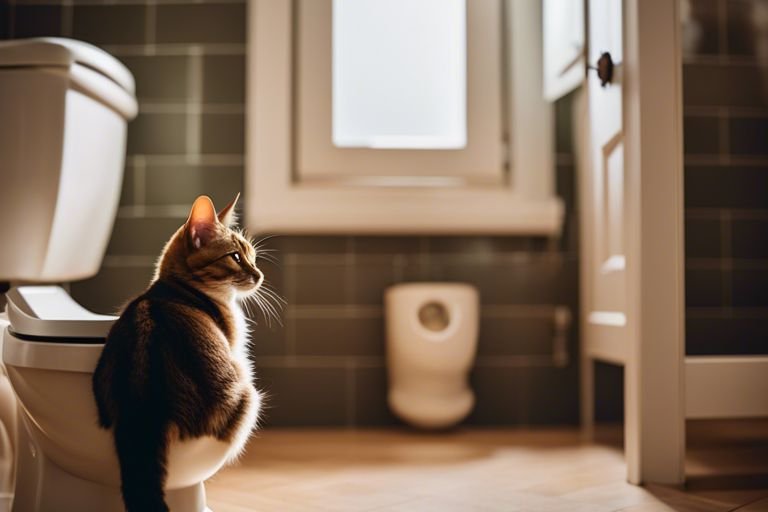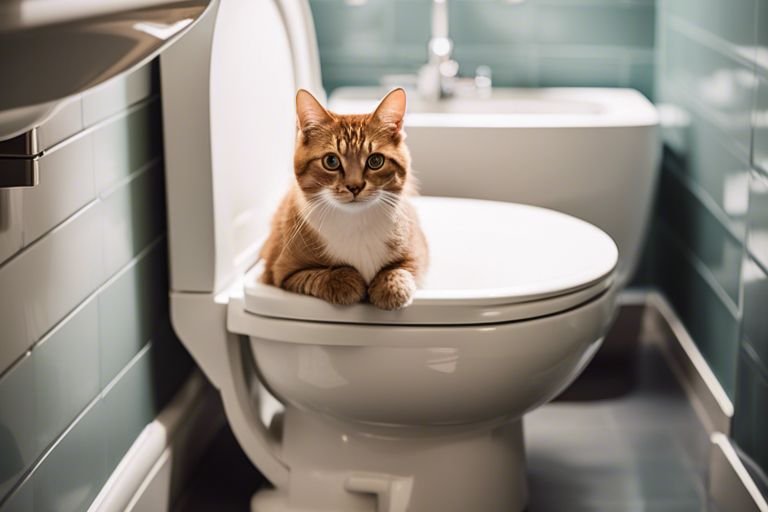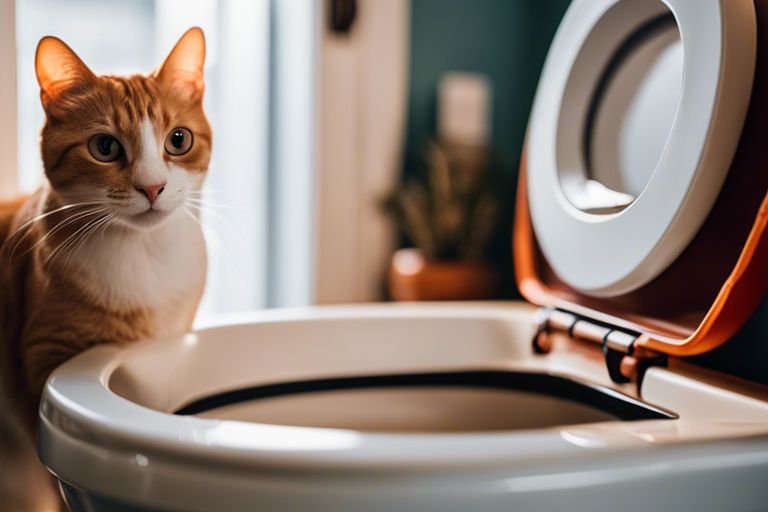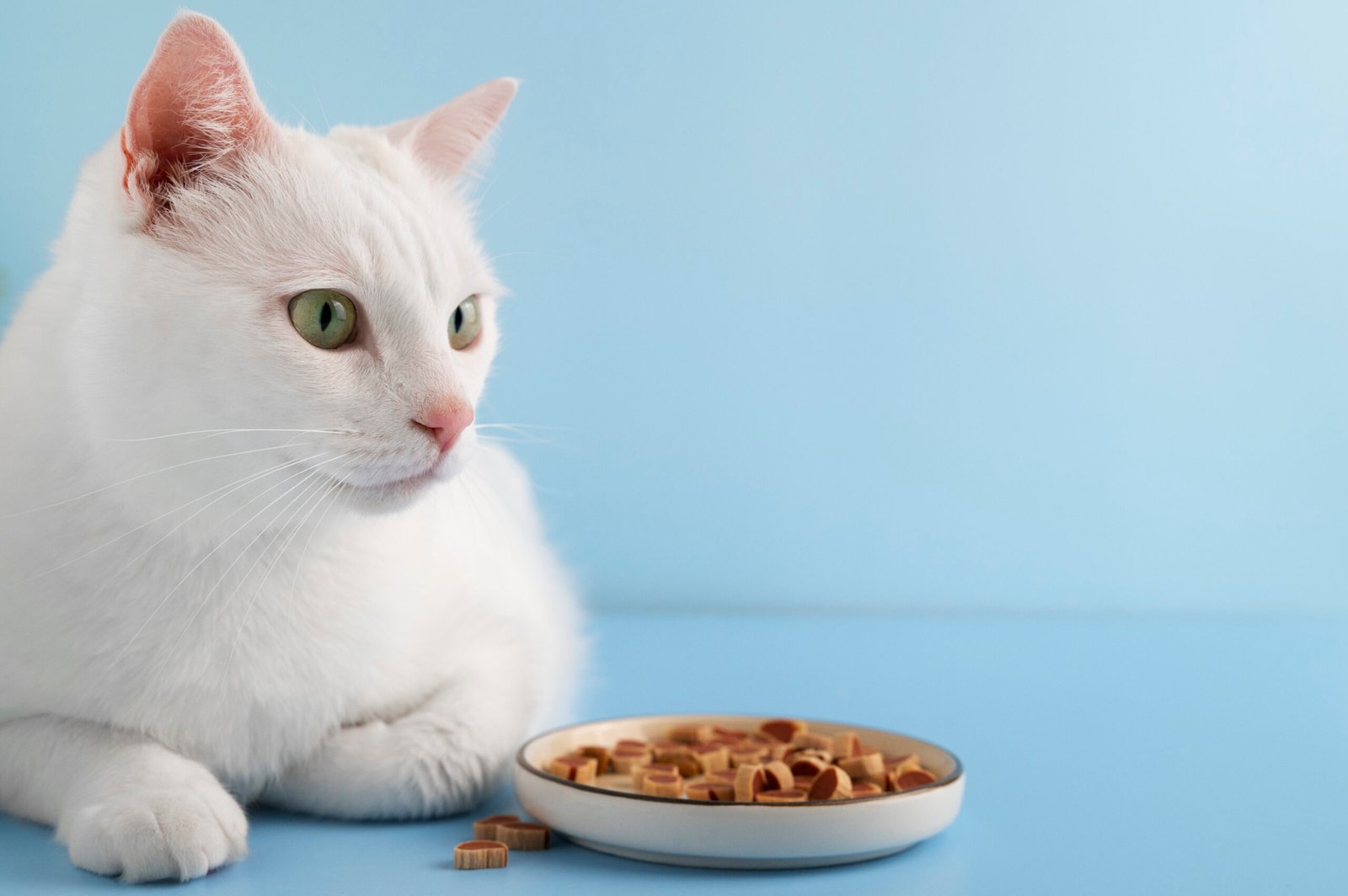How To Successfully Toilet Train Your Cat- Say Goodbye To Litter Boxes

Over the hassle of cleaning litter boxes and dealing with the constant mess? It’s time to say goodbye to traditional cat litter and successfully toilet train your cat. By following a few simple steps and being patient, you can train your cat to use the toilet like a pro. In this comprehensive guide, we will walk you through the process of toilet train your cat, from choosing the right training seat to troubleshooting common problems. Say hello to a cleaner home and a happier cat with this foolproof method of toilet train your cat.
Key Takeaways:
- Toilet train your cat is possible: With patience, consistency, and the right approach, most cats can be successfully trained to use the toilet instead of a litter box.
- Gradual transition is key: Start by placing the litter box near the toilet, then gradually elevate it until it’s level with the toilet seat. Finally, transition to a special training seat that fits over the toilet.
- Positive reinforcement is imperative: Use treats, praise, and rewards to encourage your cat to use the toilet. Punishment or scolding can be counterproductive.
- Regular cleaning is crucial: Maintain a clean toilet and training seat to ensure your cat feels comfortable using it. Regularly flush and clean the toilet to prevent odors that may deter your cat.
- Not all cats will successfully toilet train: Some cats may not adjust well to toilet training or may have medical or behavioral issues that prevent them from using the toilet. Respect your cat’s comfort and well-being throughout the training process.

Preparing for Toilet Training
Clearly, before you begin toilet training your cat, it’s necessary to ensure that they are litter trained. If your cat is not litter trained yet, you can check out this guide on how to litter train a 7-month-old cat for helpful tips.
Essential Supplies You Will Need
There’s a list of necessary supplies you will need to successfully toilet train your cat. These include a shallow litter pan, flushable cat litter, a toilet seat reducer, and treats to reward your cat for using the toilet. Having the right tools will make the training process easier and more effective.
Assessing Your Cat's Readiness and Personality Factors
Any successful toilet training program starts with assessing your cat’s readiness and personality. Cats who are outgoing, food-motivated, and not easily stressed tend to adapt well to toilet training. On the other hand, cats who are anxious, have a strong aversion to change, or are territorial may struggle with the process.
- For instance, if your cat is easily spooked by loud noises or new objects, they may find the sound of a flushing toilet unsettling.
- Perceiving your cat’s comfort level and reaction to new experiences is necessary in determining their suitability for toilet training.

The Training Process
Step-by-Step How-To Guide for Toilet Training
Any successful toilet training process for your cat requires patience, consistency, and the right approach. Here is a step-by-step guide to help you successfully toilet train your cat:
| Step | Action |
| 1 | Place the litter box next to the toilet |
| 2 | Elevate the litter box closer to the toilet gradually |
| 3 | Transition to a special training seat on the toilet |
| 4 | Remove the training seat once your cat is comfortable |
Tips for Making the Training Process Smoother
With the right approach, you can make the toilet training process smoother for both you and your cat. Here are some tips to help you along the way:
- Start the training process when your cat is young
- Use positive reinforcement, such as treats and praise
Now, understanding your cat’s behavior and reactions can also play a significant role in the success of toilet training. Knowing when your cat is ready to progress to the next step and being patient throughout the process is key to achieving success.
- Be observant of your cat’s body language
- Consistency is key in reinforcing good habits
Troubleshooting Common Challenges
Dealing with Setbacks and Accidents
You may encounter setbacks and accidents while toilet training your cat. It’s important to stay patient and consistent during this process. Accidents are part of the learning curve, and it’s crucial not to scold your cat for them. Instead, provide positive reinforcement when they use the toilet correctly. Clean up accidents promptly with an enzymatic cleaner to remove any odors that may attract your cat back to the same spot.
Factors That Might Affect Training Progression
Various factors can affect the progression of toilet training your cat. Factors such as the cat’s age, temperament, and health can influence how quickly they adapt to using the toilet. Additionally, changes in the household environment or routine can also disrupt their training progress. Be mindful of these factors and make adjustments as needed to support your cat’s learning.
- Introducing multiple cats into the home during training
- Health issues such as urinary tract infections
Troubleshooting Factors That Might Affect Training Progression: It’s necessary to address any factors that may be hindering your cat’s training progress. Be observant of your cat’s behavior and adjust the training plan accordingly. For example, if your cat is showing signs of stress or discomfort, it may be helpful to slow down the training process and provide extra reassurance to help them feel more comfortable using the toilet.
- Staying consistent with training sessions
- Monitoring the cat’s behavior closely for signs of progress
Common Challenges: Common challenges you may face include cats reverting to using a litter box, resistance to the training process, and accidents outside the toilet area. Address these challenges promptly by reassessing your training approach, providing positive reinforcement, and ensuring the toilet area is kept clean and inviting for your cat.

Maintaining Success
Transitioning to a Daily Routine
After successfully toilet train your cat, it is important to establish a daily routine to maintain their good habits. Ensure the toilet is always clean and accessible to your feline friend. Keep an eye out for any signs of discomfort or reluctance to use the toilet, as this may indicate a need for adjustment or medical attention.
Long-term Tips for Sustaining Toilet Training
Success in toilet train your cat can be sustained through long-term practices. An important tip is to consistently reward and praise your cat for using the toilet correctly. Additionally, monitor their behavior for any signs of regression and address any issues promptly.
- Continue to use a flushable litter for added familiarity.
- Regularly clean the toilet to prevent odors from deterring your cat.
Maintaining successful toilet training with your cat requires diligence and consistency. By following these long-term tips, you can ensure that your feline companion continues to use the toilet appropriately and avoids reverting to using a litter box.
Final Words
As a reminder, toilet training your cat is a feasible and convenient alternative to dealing with litter boxes. By following the right steps and being patient, you can successfully teach your feline friend to use the toilet like a pro. Remember to stay consistent with the training process and reward your cat for their progress. In no time, you’ll enjoy a home free of litter mess and odors, making both you and your cat happier. So say goodbye to litter boxes and start toilet training your cat today!
FAQ
Q: Is toilet training a cat really possible?
A: Yes, toilet training a cat is possible with the right techniques and patience.
Q: What are the benefits of toilet training a cat?
A: Toilet training your cat eliminates the need for a litter box, saves money on litter, and reduces odor in your home.
Q: How long does it typically take to toilet train your cat?
A: The time it takes to toilet train your cat can vary, but it usually takes several weeks to a few months for a cat to fully transition to using the toilet.
Q: What are some tips for successfully toilet training a cat?
A: Some tips for successful toilet train your cat include using a gradual approach, offering rewards for good behavior, and being patient with your cat throughout the training process.
Q: Are there any risks or drawbacks to toilet training a cat?
A: While toilet training can be a beneficial alternative to using a litter box, it may not be suitable for all cats, especially those who are older or have certain health issues. It’s important to consult with your veterinarian before starting the toilet training process.




